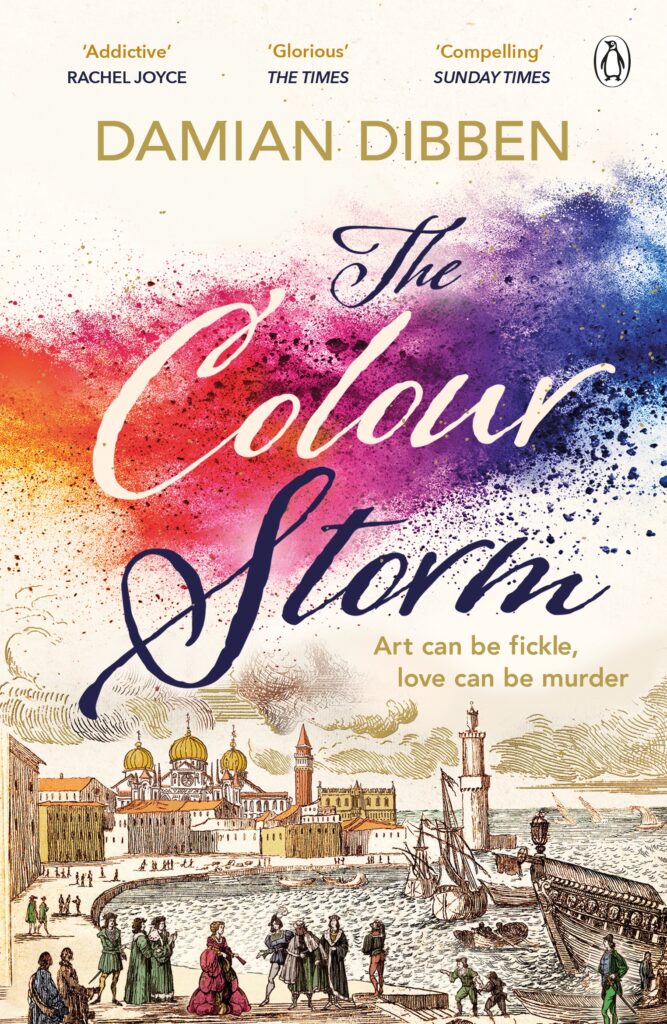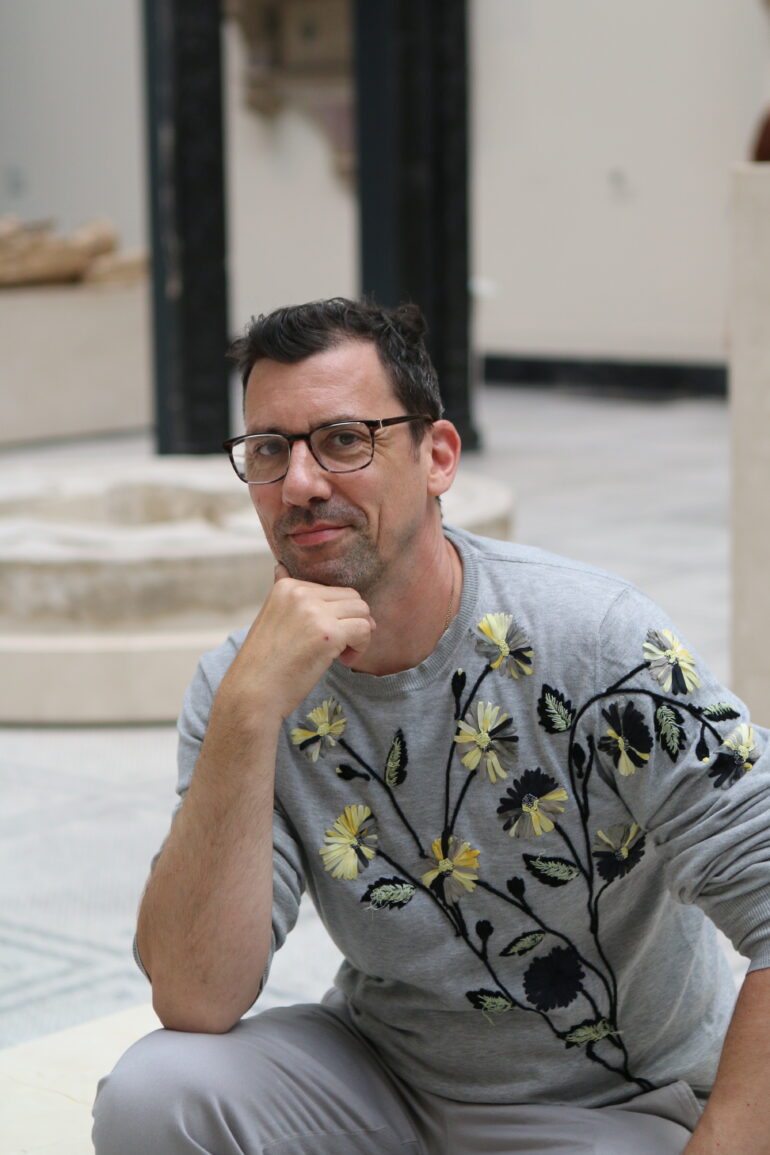The Colour Storm’ Author Damian Dibben originally trained as an artist and scenic designer, a background that led him to create a visual mood board before starting to write a book. The Sunday Times described ‘The Colour Storm’, a page-turning novel set in Renaissance Venice and inspired by the artist Giorgione, as “An engaging thriller and a compelling exploration of an artist’s obsession with colour.”
Culturalee spoke to Damian Dibben about his writing, art, influences and cultural highlights.
Culturalee: Define culture.
Damian Dibben: For me it is always storytelling. It could be opera or product design. The finest of fine art or good, ‘bad’ television. There’s a story in it all, a chance to escape, to understand, feel, and see the world afresh.
Culturalee: You’re rather a ‘Renaissance Man’, writing books, screenplays and making art. What was the starting point for your multi-disciplinary career as an author, artist and screenwriter?
Damian Dibben: I had the luck of growing up in Gloucester Road, close to so many of the great museums of London, of the world. From five years old, my brother and I made almost endless visits, to the Natural History, Science, Geological and Victoria and Albert Museums. They all excited me in different ways. I got to see how things worked, how we evolved, the beauty and marvels of both the natural and man-made world, the ambition of it all and the sweep of history. To this day I visit every museum in London many times a year and they never cease to amaze and inspire me.

Culturalee: Your book ‘The Colour Storm’ is set in Renaissance Venice, in 1510, a time when some of the world’s greatest artists were creating masterpieces. The narrative centres around the lead character Giorgione ‘Zorzo’ Barbarelli’s obsession with new paint pigments, and his obsession with a certain woman. What attracted you to this period in history and the subject matter?
Damian Dibben: A visit to the Royal Academy in London six years ago started me off. Seeing In the Age of Giorgione, I realised how little I knew of this young artist, an almost forgotten figure, but who truly stood his own against the more famous figures of the time: Michelangelo, Leonardo, Raphael and Titian (who was in fact once Giorgione’s pupil).
The era in which they lived was utterly seismic; the epoch of print and ideas and global trade. The world was changing rapidly and out of all recognition, and those artists were capturing it all, the revolutions, and some of the paranoia that came with it. Giorgione created a new way of seeing and painting, an almost impressionistic style where mood and atmosphere suffused everything.
By coincidence, a few days after seeing the exhibition, I heard an interview with Anish Kapoor. He talked about how he’d copyrighted a colour, Vantablack, the blackest black, and how this had started a kind of war with his contemporaries. Colour has always had an emotional impact on people and artists are willing to fight for it, sometimes to the death. The story took shape rapidly.
Culturalee: What has been your definitive cultural experience?
Damian Dibben: The greatest evening of my life (apart from perhaps my wedding) was watching the 2012 Olympics Opening Ceremony. My partner had a free ticket for himself from work, and, having always loved the Olympics, and being a Londoner, I was so jealous I paid, (rather borrowed), a ridiculous sum on the night to get in. The best money I’ve ever spent. Astonishing. In every way possible – the ingenuity, ambition, storytelling, history, and pure emotion – it displayed the best of humanity. That the world could celebrate its people and their achievements so spectacularly affected me deeply.

Culturalee: What’s your favourite artist, film, book exhibition or musician?
Damian Dibben: I always found It’s A Wonderful Life to be unrivalled as a work of art. Perfectly written, exquisitely made, with a story as profound and human as you get, and yet told with such ease, originality and humour. A more recent favourite is Donna Tartt’s The Goldfinch, for all the same reasons. Fiendishly clever, but full of heart, and art. The complex canvas of a world she creates is magnificent. If I was to choose just one painting it might be Rembrandt’s Syndics of the Draper’s Guild.
Culturalee: Who are the cultural icons and creators that have inspired you most?
Damian Dibben: The great film directors of past and present, of whom I must single out Frank Capra, Alfred Hitchcock, Billy Wilder, Stanley Kubrick, (early) Steven Spielberg, and currently Christopher Nolan. Between them they offer the greatest storytelling ever, always novel and taking us on unforgettable and shockingly emotional journeys.
Culturalee: Any tips for young people wanting to make it as an author?
Damian Dibben: The coming up with ideas is always thrilling, as is the publication. But we must remember, and embrace, the part in-between, the job, the grind. Set aside a particular number of words each day, or hours. Imagine a sculptor before a huge square of marble. The chiseling away can become monotonous, but overall purpose sees them through. And finally I’d say listen to your sub-conscious when you can. It works on diligently when you’ve stopped and gone to sleep, and generally knows what is right. I’m always amazed what a morning can bring.
Instagram: @damiandibben_



